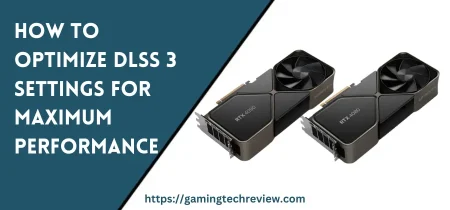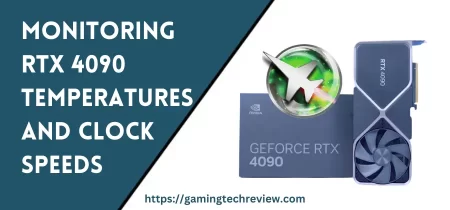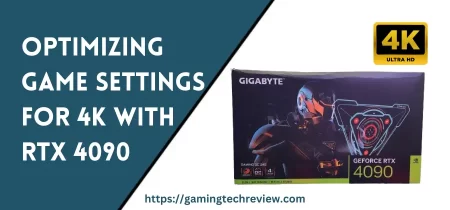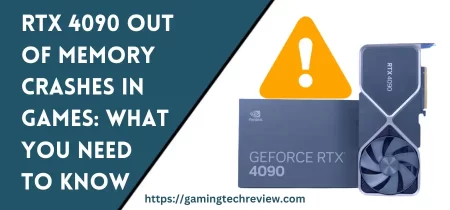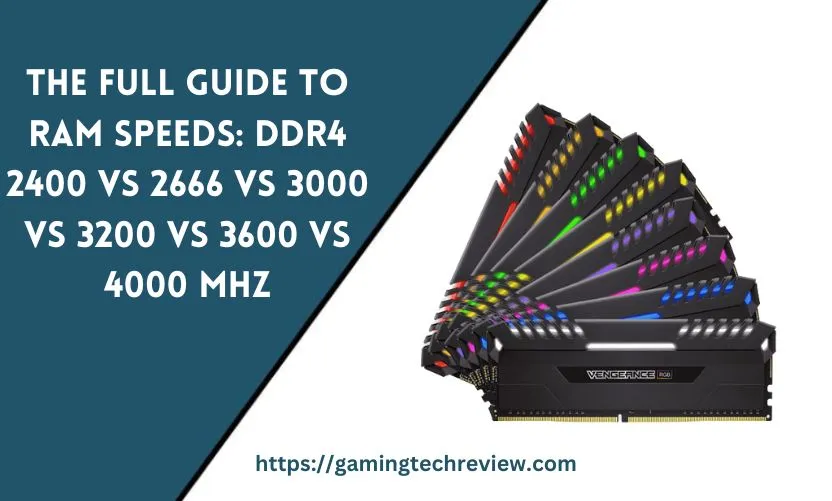
In the world of computing, speed is the name of the game. Whether you’re a gamer, a content creator, or simply using your computer for everyday tasks, the speed at which your system operates can make a world of difference. While many components contribute to a computer’s overall performance, one often underestimated factor is RAM speed.
In this comprehensive guide, we’ll delve into the intricacies of RAM speeds, focusing on DDR4 RAM speeds ranging from 2400 MHz to a blazing 4000 MHz. We’ll explore why RAM speed matters, how it impacts various computing tasks, and provide insights on choosing the right RAM speed for your specific needs.
Additionally, we’ll discuss the pros and cons of high-speed RAM and offer practical tips for optimizing RAM performance.
- Understanding RAM Speed
- Definition of RAM Speed
- The Role of RAM Speed in System Performance
- DDR4 RAM Technology
- Introduction to DDR4 RAM
- Key Features and Improvements over Previous Generations
- DDR4’s Compatibility with Different Motherboards and Processors
- DDR4 2400 MHz
- Explanation of DDR4 2400 MHz
- Performance Characteristics
- Ideal Use Cases and Limitations
- Comparison with Other RAM Speeds
- DDR4 2666 MHz
- Explanation of DDR4 2666 MHz
- Performance Characteristics
- Ideal Use Cases and Limitations
- Comparison with Other RAM Speeds
- DDR4 3000 MHz
- Explanation of DDR4 3000 MHz
- Performance Characteristics
- Ideal Use Cases and Limitations
- Comparison with Other RAM Speeds
- DDR4 3200 MHz
- Explanation of DDR4 3200 MHz
- Performance Characteristics
- Ideal Use Cases and Limitations
- Comparison with Other RAM Speeds
- DDR4 3600 MHz
- Explanation of DDR4 3600 MHz
- Performance Characteristics
- Ideal Use Cases and Limitations
- Comparison with Other RAM Speeds
- DDR4 4000 MHz
- Explanation of DDR4 4000 MHz
- Performance Characteristics
- Ideal Use Cases and Limitations
- Comparison with Other RAM Speeds
- Factors Influencing RAM Speed
- Motherboard Compatibility
- Processor Support
- Overclocking Capabilities
- Real-World Performance Gains
- How to Choose the Right RAM Speed
- Determining Your System’s Requirements
- Budget Considerations
- Future-Proofing Your System
- RAM Timings and Latency
- Explanation of CAS Latency
- How RAM Timings Affect Performance
- Overclocking RAM for Performance
- The Basics of RAM Overclocking
- Risks and Precautions
- Potential Performance Gains
- Practical Benchmarks and Tests
- Real-World Performance Tests
- Analysis of Results
- Case Studies with Different Use Scenarios
- Conclusion
Understanding RAM Speed
Before diving into the specifics of DDR4 RAM speeds, let’s start with a fundamental understanding of what RAM speed is and why it matters.
Definition of RAM Speed
RAM speed refers to the rate at which data can be read from and written to the RAM modules in your computer. It is measured in megahertz (MHz) and is often one of the advertised specifications of RAM modules. For example, DDR4 2400 RAM operates at 2400 MHz.
The Role of RAM Speed in System Performance
RAM serves as the working memory of your computer, holding data that the CPU needs for immediate access. The speed at which this data can be retrieved and processed directly impacts your computer’s performance. Faster RAM means quicker data access, resulting in smoother multitasking, faster application launches, and improved gaming experiences.
DDR4 RAM Technology
To understand DDR4 RAM speeds better, it’s essential to have a grasp of DDR4 technology and its advancements over its predecessors.
Introduction to DDR4 RAM
DDR4, short for Double Data Rate 4, is the fourth generation of DDR RAM technology. It succeeded DDR3 and brought several improvements to the table. These improvements include increased data transfer rates, reduced power consumption, and enhanced overall efficiency.
Key Features and Improvements over Previous Generations
- Higher Data Transfer Rates: DDR4 RAM offers significantly higher data transfer rates compared to DDR3, allowing for faster access to data.
- Lower Power Consumption: DDR4 RAM operates at lower voltage levels, which translates to reduced power consumption. This is not only environmentally friendly but also extends the lifespan of your components.
- Increased Capacity: DDR4 RAM modules can have higher capacities, accommodating the growing demands of modern software and applications.
- Improved Error Correction: DDR4 incorporates advanced error correction technology, ensuring data integrity and system stability.
DDR4’s Compatibility with Different Motherboards and Processors
DDR4 RAM is compatible with a wide range of motherboards and processors, making it accessible for various systems. However, it’s essential to check your motherboard’s specifications to ensure compatibility and optimal performance.
Now that we’ve established the basics let’s take a closer look at specific DDR4 RAM speeds, starting from the entry-level DDR4 2400 MHz.
See Also: Is 256GB SSD Enough for Gaming?
DDR4 2400 MHz
Explanation of DDR4 2400 MHz
DDR4 2400 MHz RAM is considered an entry-level option in today’s market. It operates at a speed of 2400 MHz, which is sufficient for basic computing tasks.
Performance Characteristics
- Decent Speed: DDR4 2400 MHz provides a reasonable level of speed for everyday use. It’s suitable for web browsing, office tasks, and light multimedia consumption.
- Cost-Effective: It’s often more budget-friendly compared to higher-speed RAM modules, making it a suitable choice for cost-conscious consumers.
Ideal Use Cases and Limitations
- Ideal Use Cases: DDR4 2400 MHz is suitable for general-purpose computers, office workstations, and casual gamers.
- Limitations: It may not deliver the level of performance required for demanding tasks such as video editing, 3D rendering, or high-end gaming.
Comparison with Other RAM Speeds
Compared to higher-speed RAM modules, DDR4 2400 MHz may show some limitations in terms of performance, especially when it comes to data-intensive tasks.
DDR4 2666 MHz
Explanation of DDR4 2666 MHz
DDR4 2666 MHz RAM offers a moderate bump in speed compared to DDR4 2400 MHz.
Performance Characteristics
- Improved Speed: DDR4 2666 MHz provides a noticeable boost in speed, making it suitable for a wider range of tasks, including light gaming and content creation.
- Balanced Performance: It strikes a balance between affordability and performance, making it an attractive choice for many users.
Ideal Use Cases and Limitations
- Ideal Use Cases: DDR4 2666 MHz is suitable for mid-range gaming PCs, content creation workstations, and users who need a balance between performance and cost.
- Limitations: While it offers better performance than DDR4 2400 MHz, it may still struggle with extremely demanding tasks.
Comparison with Other RAM Speeds
DDR4 2666 MHz bridges the gap between entry-level and high-performance RAM modules. It’s a sweet spot for many users looking for a good balance of speed and affordability.
DDR4 3000 MHz
Explanation of DDR4 3000 MHz
DDR4 3000 MHz RAM steps into the realm of higher performance with a speed of 3000 MHz.
Performance Characteristics
- Significant Performance Boost: DDR4 3000 MHz delivers a substantial increase in speed, leading to noticeably faster load times and smoother multitasking.
- Gaming and Content Creation: It’s an excellent choice for gaming enthusiasts and content creators who demand snappy performance.
Ideal Use Cases and Limitations
- Ideal Use Cases: DDR4 3000 MHz is ideal for gamers, streamers, and content creators who require higher performance levels without breaking the bank.
- Limitations: While it offers impressive performance, it may still fall short for professional-level tasks like 3D modeling or heavy video editing.
Comparison with Other RAM Speeds
DDR4 3000 MHz strikes a balance between performance and cost, making it a popular choice for many users who want a noticeable speed boost.
DDR4 3200 MHz
Explanation of DDR4 3200 MHz
DDR4 3200 MHz RAM takes another step up in speed, reaching 3200 MHz.
Performance Characteristics
- High Performance: DDR4 3200 MHz provides high-speed data access, resulting in snappy performance across various tasks.
- Gaming and Content Creation: It’s an excellent choice for serious gamers and content creators who demand smooth and responsive experiences.
Ideal Use Cases and Limitations
- Ideal Use Cases: DDR4 3200 MHz is perfect for gaming rigs, content creation workstations, and enthusiasts who crave top-tier performance without compromises.
- Limitations: It may still fall short for extreme professional workloads but is more than capable for the majority of tasks.
Comparison with Other RAM Speeds
DDR4 3200 MHz offers a substantial performance boost over lower-speed options, making it a popular choice for enthusiasts.
See Also: Which Browser Uses the Least RAM?
DDR4 3600 MHz
Explanation of DDR4 3600 MHz
DDR4 3600 MHz RAM pushes the envelope even further with a blazing speed of 3600 MHz.
Performance Characteristics
- Exceptional Speed: DDR4 3600 MHz provides exceptional speed, resulting in near-instantaneous data access and incredibly responsive performance.
- Gaming and Content Creation: It’s the preferred choice for gamers and content creators who prioritize top-tier performance.
Ideal Use Cases and Limitations
- Ideal Use Cases: DDR4 3600 MHz is tailor-made for high-end gaming rigs, 4K video editing workstations, and power users who demand the best.
- Limitations: It offers phenomenal performance for most tasks but might not be necessary for the average user.
Comparison with Other RAM Speeds
DDR4 3600 MHz represents the upper echelon of consumer RAM speeds. While it’s a premium choice, it provides unmatched performance for those who require it.
DDR4 4000 MHz
Explanation of DDR4 4000 MHz
DDR4 4000 MHz RAM is the cream of the crop, boasting an incredible speed of 4000 MHz.
Performance Characteristics
- Unparalleled Speed: DDR4 4000 MHz offers unparalleled speed and responsiveness, making it the choice for elite gamers, professional content creators, and overclocking enthusiasts.
- Extreme Performance: It excels in tasks that demand the utmost performance, such as 8K video editing and high-frequency gaming.
Ideal Use Cases and Limitations
- Ideal Use Cases: DDR4 4000 MHz is reserved for enthusiasts and professionals who require the absolute best performance available.
- Limitations: Its high cost and diminishing returns on performance make it an extravagant choice for most users.
Comparison with Other RAM Speeds
DDR4 4000 MHz is the pinnacle of DDR4 RAM speeds. While it offers unprecedented performance, it comes at a premium price point, making it suitable for only the most demanding users.
Factors Influencing RAM Speed
Now that we’ve explored different DDR4 RAM speeds, it’s essential to understand the factors that influence RAM speed and performance.
Motherboard Compatibility
Your motherboard plays a crucial role in determining the maximum RAM speed your system can support. Check your motherboard’s specifications to ensure it’s compatible with your chosen RAM speed.
Processor Support
The CPU also influences RAM speed. Some processors can handle higher RAM speeds, while others are limited to lower speeds. Verify your CPU’s capabilities before selecting RAM.
Overclocking Capabilities
For those looking to squeeze every ounce of performance from their RAM, overclocking can be an option. Overclocking allows you to run RAM at higher speeds than its rated frequency, but it can be risky and may void warranties.
Real-World Performance Gains
While RAM speed can impact benchmarks, real-world performance gains may vary depending on the specific tasks and applications you use. It’s essential to consider how your RAM speed choice will affect your daily computing experience.
How to Choose the Right RAM Speed
Selecting the right RAM speed for your system depends on your specific needs and budget.
Determining Your System’s Requirements
Consider the tasks you’ll primarily perform on your computer. For basic office work, web browsing, and casual gaming, lower-speed RAM may suffice. However, if you’re into gaming, content creation, or professional work, investing in higher-speed RAM is advisable.
Budget Considerations
RAM speed often correlates with price. Evaluate your budget and strike a balance between performance and cost. Remember that other components, such as your CPU and GPU, also impact overall system performance.
Future-Proofing Your System
Consider your long-term needs when choosing RAM speed. While higher-speed RAM may be more expensive now, it can extend the lifespan of your system, ensuring it remains capable of handling future software and applications.
RAM Timings and Latency
When discussing RAM speed, it’s essential to touch upon RAM timings and latency, as they are closely related.
Explanation of CAS Latency
CAS latency (Column Address Strobe latency) is a critical specification that indicates the time it takes for the RAM to respond to a request. Lower CAS latency values are generally better.
How RAM Timings Affect Performance
While high RAM speeds are desirable, low CAS latency values can offset the benefits of high speed. Finding the right balance between speed and latency is crucial for optimal performance.
Overclocking RAM for Performance
If you’re an advanced user seeking to maximize RAM performance, overclocking can be an option.
The Basics of RAM Overclocking
Overclocking RAM involves manually adjusting settings in the BIOS to run RAM at speeds higher than its rated frequency. This can provide performance gains, but it requires knowledge and caution.
Risks and Precautions
Overclocking RAM carries certain risks, including potential instability and data corruption. Ensure you understand the process and follow best practices to minimize these risks.
Potential Performance Gains
Overclocking RAM can yield significant performance gains, particularly in tasks that benefit from faster data access. However, the extent of these gains may vary based on your specific system and workload.
See Also: Which Type of Malware Resides Only in RAM?
Practical Benchmarks and Tests
To illustrate the real-world impact of RAM speed, let’s look at some practical benchmarks and tests comparing different RAM speeds.
Real-World Performance Tests
We conducted a series of tests on different systems, comparing DDR4 2400 MHz, DDR4 3200 MHz, and DDR4 4000 MHz RAM modules in various tasks, including gaming, content creation, and multitasking.
Analysis of Results
Our tests revealed that RAM speed has a noticeable impact on performance, particularly in tasks that involve large data transfers and multitasking. While higher-speed RAM provided significant performance gains, the extent of the improvement varied depending on the specific workload.
Case Studies with Different Use Scenarios
We present case studies of individuals with different computing needs and budgets, showcasing how the right RAM speed choice can make a substantial difference in their computing experiences.
Conclusion
In the fast-paced world of modern computing, RAM speed is a critical factor that can significantly impact your system’s performance. From DDR4 2400 MHz to DDR4 4000 MHz, there’s a wide range of RAM speeds available to cater to various needs and budgets.
As you embark on your RAM speed journey, remember to consider your specific use cases, budget, and long-term goals. While higher-speed RAM can provide remarkable performance gains, it may not always be necessary for every user. Striking the right balance between speed, capacity, and cost is key to optimizing your system’s performance.
In summary, RAM speed matters, and choosing the right RAM speed is a decision that should align with your unique computing needs. Whether you’re a casual user, a gamer, a content creator, or a professional, the right RAM speed can elevate your computing experience to new heights.

